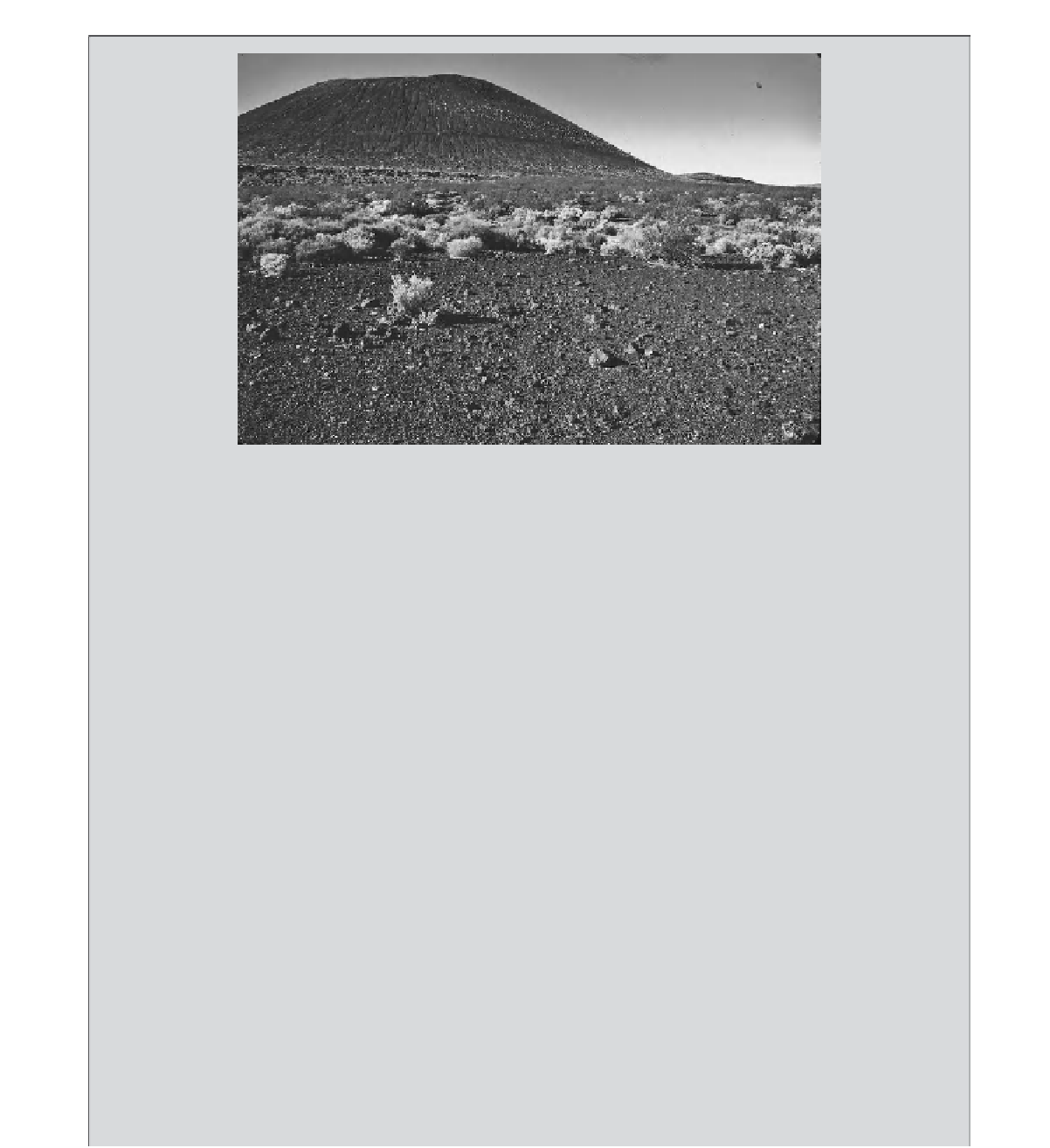Geoscience Reference
In-Depth Information
Figure 9.13
The pavements of the Cima Volcanic Field, Mojave Desert, California, are very well studied and provide an
excellent example of the type of inflationary surfaces common in the southwestern United States. The pavement sits above
a great thickness (from 100 to 300 cm) of aeolian-derived fine sand, silt and clay. Surface-exposure dates show that the
pavement clasts are the same age as the underlying basalt flows. In the background is one of the 40 cinder cones in the area
and, in the foreground, the smooth appearance of a well-developed pavement.
formed from the Miocene to Holocene (Figure 9.13). Not only are pavements extensive on these flows, but also
dating has provided age control, allowing the study of pavement evolution over time.
Cima represents an excellent example of the type of inflationary desert pavements commonly observed in the
southwestern United States. The cumulic aeolian epipedon (a soil horizon that forms at or near the surface, at the
boundary between the soil and air) steadily accumulates in thickness as a function of dust deposition rates. The
accretionary mantle at Cima is very thick and relatively clast free. It consists of a 1- to 3-m-thick accumulation of
aeolian fine sand, silt and clay (Wells
et al.
, 1985).
One of the most important aspects of the lava flow studies at Cima is that the surfaces are dateable. K-Ar dating
of the underlying bedrock on which pavements formed provides an important age control. In situ cosmogenic
3
He
surface-exposure dates indicate that the pavements are isochronous with the underlying basalt flows (Wells
et al.
,
1995), suggesting that the pavement clasts were never buried, but rose upward on a vertically accreting aeolian
mantle and were maintained as the underlying soil evolved (Wells
et al.
, 1985; McFadden, Wells and Dohrenwend,
1986; Anderson, Wells and Graham, 2002).
By examining flows of different ages, Wells
et al.
(1985) and McFadden, Wells and Jercinovich (1987) were
able to demonstrate that the morphology of flow surfaces changes markedly over time in concert with pavement
development. Relative to more recent flows, which show numerous surface features, older flows lack constructional
forms, have very low relief and possess extensive stone pavements. The pavement forms as locally derived basaltic
rubble, consisting of mechanically weathered blocks of flow rock derived from constructional highs, moves into
topographic lows by mass wasting and other slope processes. In turn, aeolian fines accumulate in the topographic
lows, owing to local reductions in near-surface wind velocity. Basalt flows, with high initial surface roughness and
permeability, are very effective traps for salts and aeolian materials derived from nearby playas and distal piedmont
areas (Wells
et al.
, 1985). Accumulation appears not to be continuous, but episodic, with occasional rapid influxes
of material. The most active dust incorporation occurs during periods of playa expansion and vegetation reduction
(McFadden
et al.
, 1998). Over time, the surface roughness of the flow reduces and the trapping effect is dampened.
The extremely high permeability of flows inhibits fluvial erosion of the trapped silt.

